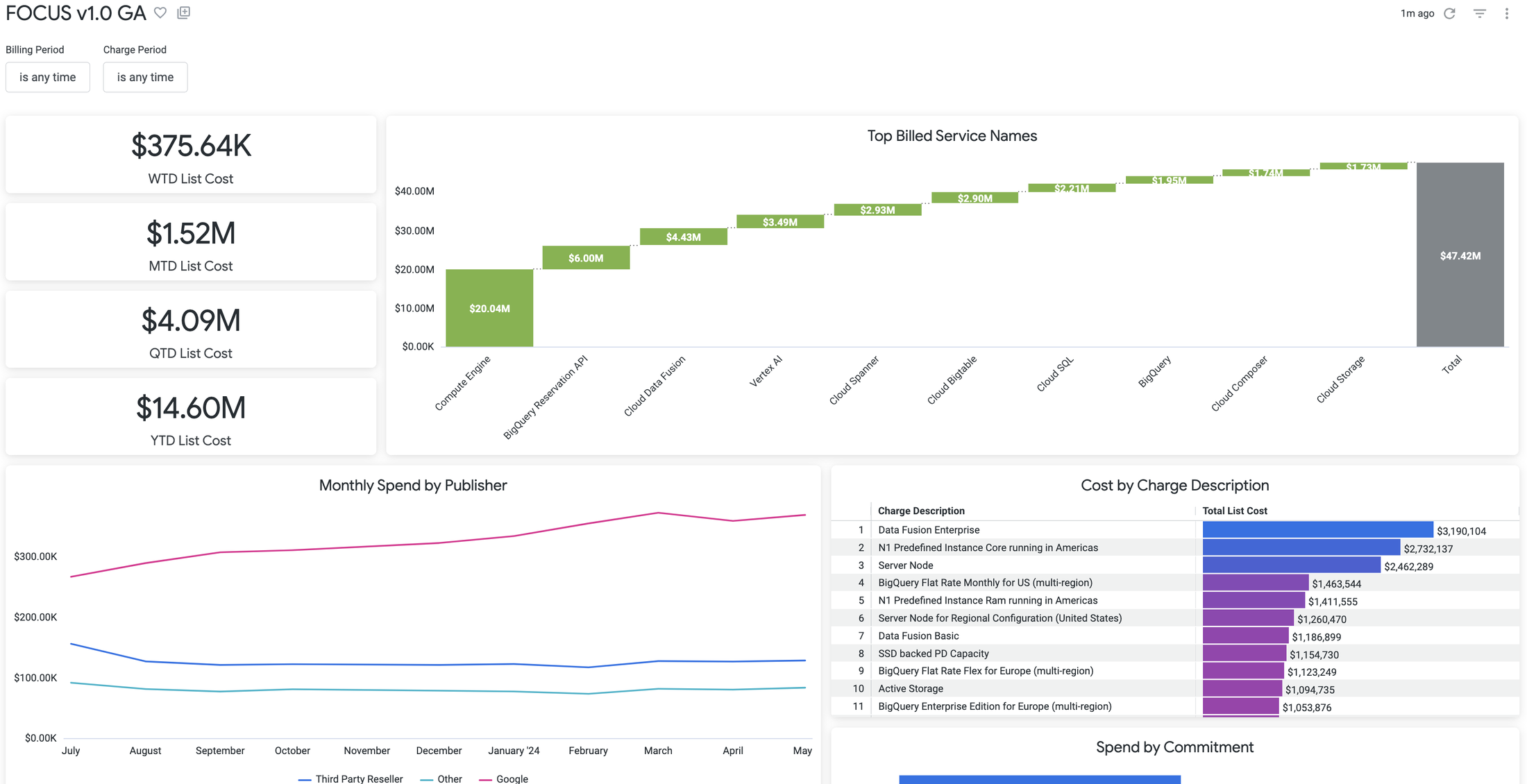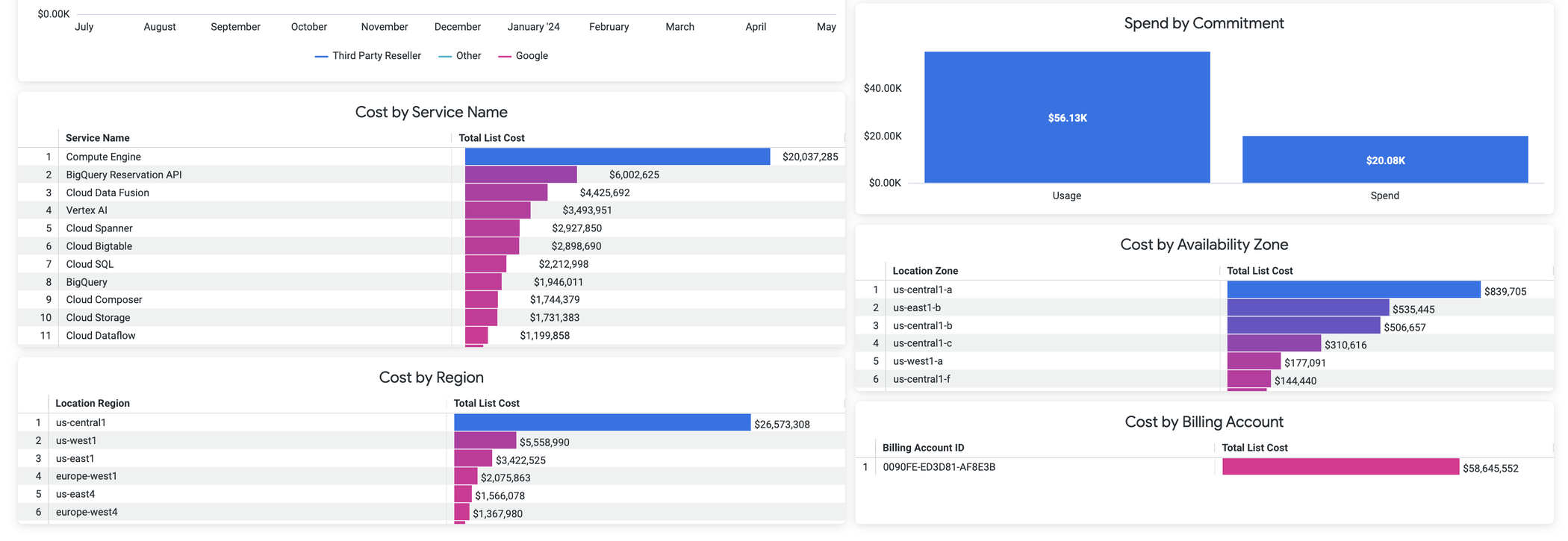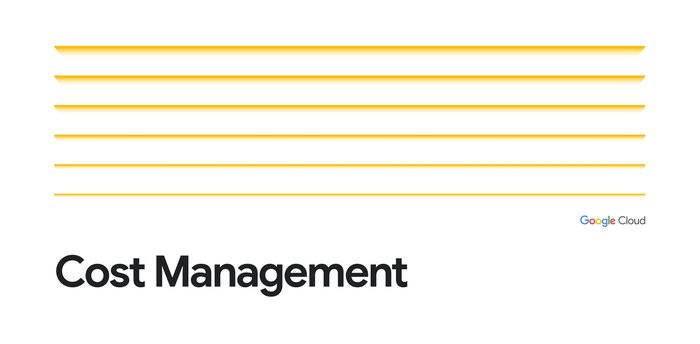Normalize billing data across clouds with new Looker template and BigQuery views
Rupa Patel
Senior Product Manager, Cloud FinOps
At Google Cloud, we strongly believe you should have resources to analyze Google Cloud costs alongside other cloud providers, so you can better manage and optimize cloud costs. You should not need to spend time mapping billing terminology across cloud providers. And we believe in doing that through open standards. We were a founding member of the FinOps Foundation, a founding Steering Committee member of the FOCUS™ project, and a core contributor for the v0.5 and v1.0 Preview and GA open billing specifications. Today, we’re excited to announce a new Looker template view that leverages the recent FOCUS v1.0 GA to help simplify cloud cost management across clouds.0
What is FOCUS?
The unifying specification for cloud billing data, FOCUS is a technical specification that normalizes cost and usage billing data across cloud vendors. FOCUS aims to deliver consistency and standardization across cloud billing data by unifying cloud and usage data into one common data schema. Before FOCUS, there was no industry-standard way to normalize key cloud cost and usage measures across multiple cloud service providers (CSPs), making it challenging to understand how billing costs, credits, usage, and metrics map from one cloud provider to another (see FinOps FAQs for more details).
The FOCUS initiative is developing an open standard for cloud billing data and is being adopted by all major cloud vendors. With the introduction of Version 1.0, there is a common taxonomy, terminology, and metrics for billing datasets produced by CSPs.
Introducing a new Looker template for FOCUS v1.0 GA
Our new Looker template allows you to visualize your open billing data in Looker, generating a table based on the results of the FOCUS query. The provided LookML code creates and manages these tables automatically, so you won't need to create them manually. This template offers a glimpse of what’s possible to visualize your cost trends across services, SKUS, zones, regions, and resource types, offering many benefits:
- Out-of-the box template: No more waiting for custom dashboards. The templates give you immediate access to pre-built visualizations that reveal cost trends, breakdowns by services, charges, and regions.
- Easy filtering: You don't need to be a data analyst to user this template. Looker has an intuitive interface that lets you filter to specific time periods or services, and drill down into details with just a few clicks.
- Customizability: While the template is a great starting point, Looker's flexibility lets you tailor the views to your specific needs. If you need to add custom metrics, change the visualizations, or embed the dashboards into your existing workflows, you can do that easily.


View your costs by billed services, publisher, commitments and more
An updated BigQuery view for FOCUS v1.0 GA
We offer three ways to export cost and usage-related Cloud Billing data to BigQuery: Standard Billing Export, Detailed Billing Export (resource-level data and price fields to join with Price Export table), and Price Export. In January, we introduced a new BigQuery view, a virtual table that represents the results of a SQL query, that transforms data towards FOCUS v1.0 Preview format. Today, we’re announcing an update to that BigQuery view to adapt towards the FOCUS v1.0 GA. If you are already using the Preview and want to update your BigQuery view to the FOCUS GA, please see the existing guide, which is kept up-to-date to reflect any new changes.
BigQuery views are great because the queryable virtual table only contains data from the tables and fields specified in the base query that defines the view. BigQuery views are virtual tables, so they incur no additional charges for data storage if you are already using Billing Export to BigQuery. With this BigQuery view you can:
-
View and query Google Cloud billing data that is adapted towards the FOCUS v1.0 specification
-
Use the BigQuery view as a data source for a visualization tools like Looker Studio
-
Analyze your Google Cloud costs alongside data from other providers using the common FOCUS format
How it works
-
The FOCUS BigQuery view acts as a virtual table that sits on top of your existing Cloud Billing data. To use this feature, you will need Detailed Billing Export and Price Exports enabled. The FOCUS BigQuery view uses a base SQL query to map your Cloud Billing data into the FOCUS schema, presenting it in the specified format. This allows you to query and analyze your data as if it were native to FOCUS, making it easier to analyze costs across different cloud providers.
-
The Looker template is supported by Looker and Looker Core, not Looker Studio. To use the template out of the box, ensure you have Detailed Billing Export and Pricing Export Enabled. You will also need permissions to create new Looker Project & Connection.
-
Unlike BigQuery Views, this Looker template utilizes temporary tables. The provided LookML code will create and manage these tables automatically, so you won't need to create them manually.
We've made it easy to leverage the power of FOCUS in Looker and in BigQuery with a step-by-step guide. To view this Looker template and sample SQL query and follow the step-by-step guide, sign up here.


Compare costs by services, regions, availability zones, and commitments
Looking ahead: Leading in open billing standards
We look forward to continuing to shape the standards of open billing standards alongside our customers, FinOps practitioners in the industry, the FinOps Foundation, CSPs, SaaS providers, and more. Get a unified view of your cloud costs today with the FOCUS Looker template and BigQuery view. Sign up here to learn more and get started.
Special thanks to Paige Rutherford, Sidney Stefani, Jingjie Zheng, Jacky Liu, and Gina Huh who helped develop these features.

